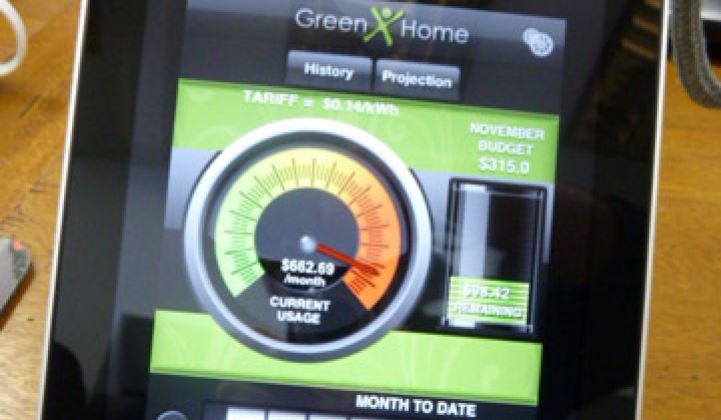In Silicon Valley, it is an article of faith that startups sink or succeed because of management and the people behind them, not their technologies.
People Power seems destined to be a test case of that rule.
The company -- which has developed a cloud service for managing energy consumption in homes and office buildings -- seems to have fairly solid technology. The energy management system will monitor the power consumption of refrigerators, copy machines, printers, power strips and pretty much anything else with a plug and allow a user to control his or her appliances directly, or put them on autopilot to maximize conservation.
The interface, which users can view on PCs, phones or tablets, provides information on current power consumption, power consumed to date during a specific period (e.g., day, week, month or year), how an individual's power consumption compares to the power consumption of a neighbor or similarly situated home, tips to reduce power, money spent so far on power and the expected amount of upcoming bills, among other information. (That's one screen of the interface in the photo.)
In other words, the interface offers many of the same services touted by Tendril, OPower, EcoFactor, EnerNoc, Building IQ and other companies.
Where People Power hopes to differ from the pack is through friends. Instead of trying to sell energy management services and hardware straight to customers, People Power hopes to license its technology and services to established manufacturers, who will resell them under their own brands as their own product. Ricoh is already a partner. Texas Instruments is providing People Power with 900 MHz radios for linking up appliances.
"When you are a little dinky company, it is hard to tell the world that you are there," said CEO and co-founder Gene Wang.
A serial entrepreneur who has worked at several large companies, Wang brings a hefty Rolodex to the table, as well. He was the CEO of Computer Motion, which made robotic surgical tools that got bought by the wildly successful Intuitive Surgical. Photo Access got sold to Agilent and then to American Greetings. Bitphone got sold to Hewlett Packard in 2007: Nokia, China Mobile, Samsung and others use the cellular management service.
Google, Comcast, Verizon, and AT&T, among others, have already unfurled plans to market home energy management services. Other giants may thus soon feel that they face a choice between falling behind or linking up with a partner to provide similar services.
But has People Power come up with a formula that's magically delicious for making it in this market? That's the open question -- and in some ways it's a mixed bag. (Disclosure: Peter Glaskowsky, now at Intel, was the first to apply the "Magically Delicious" rule to business plans.) First, the company seems mostly to be initially focused on home energy management, a much more challenging market than commercial real estate or industrial space. Individual homes simply consume far less energy than office buildings, making it more difficult to achieve sustainable, documentable gains through conservation. If an energy management service can save someone $20 a month, consumers at best might pay $10 a month. Utilities will pay more than that to curb power consumption in homes on peak days, but they are already working with demand response specialists like Comverge for those services. People Power is not yet marketing its wares to utilities.
To make it even more challenging, appliance makers are curbing power in their products. Panasonic has a refrigerator that dynamically adjusts power to conserve energy, as well as an air conditioner that targets cold air to the areas where it thinks people happen to be at the moment. Samsung is working to crank standby power levels in TVs and microwaves down to one watt. The 60-watt incandescent bulb will soon get replaced by 10-watt LEDs. Will consumers really need networked appliances if they are already regulating themselves?
Meanwhile, the commercial energy management space is already somewhat crowded with companies that can diagnose problems (Scientific Conservation), control lights (Daintree Networks, Digital Lumens) and monitor HVAC units (Optimum Energy, BuildingIQ, Your Name Here). Many of these have alliances with large companies, as well. General Electric invested in Tendril and Siemens just bought SiteControls.
Cost is on the company's side, says Wang. It only costs about $5 to embed People Power's hardware (the radio and controller) into an appliance or wall plug. Thus, the raw intelligence isn't that costly. The wireless system also functions better than power line networking and, in many cases, better than ZigBee, he added. To insulate itself against standards wars, the company can also run its service over Wi-Fi or ZigBee.
And even if appliances get cheaper, manufacturers will still want a service. "Even if they do make their appliances energy efficient, they don't get credit for it," he said. "I've never bought a Samsung appliance because it saved me money."



